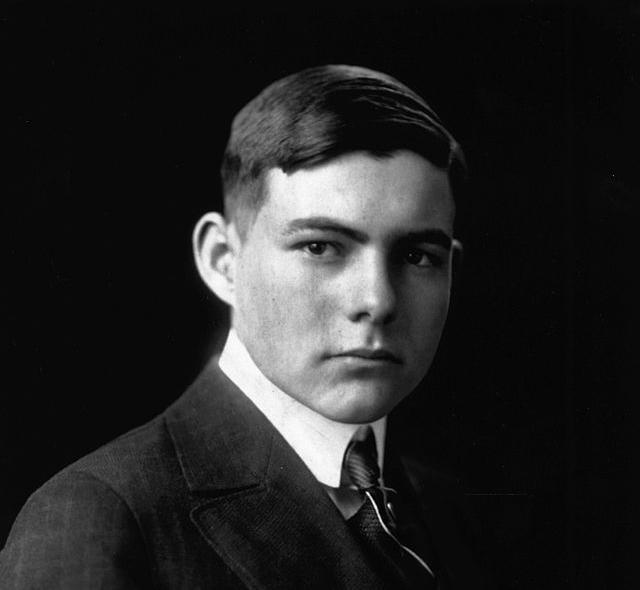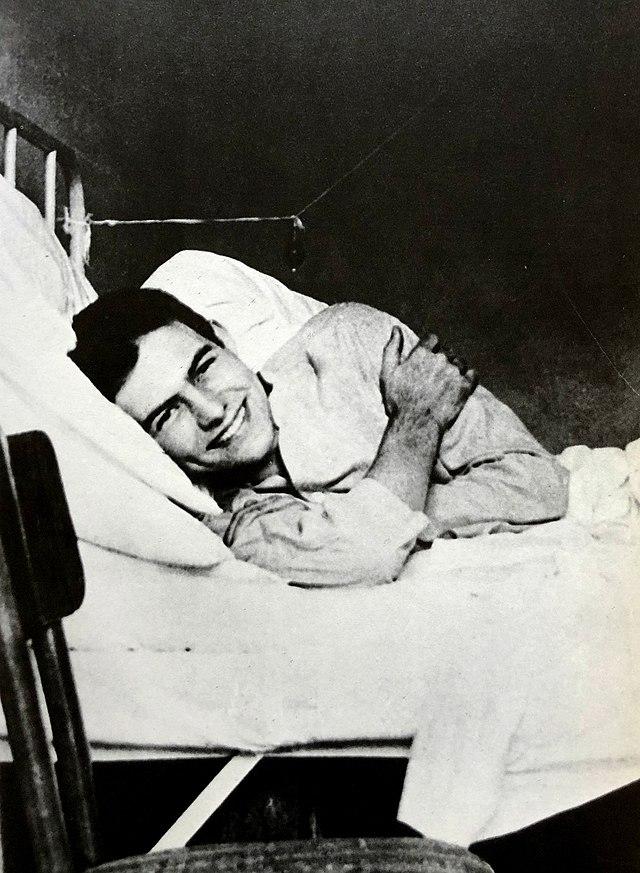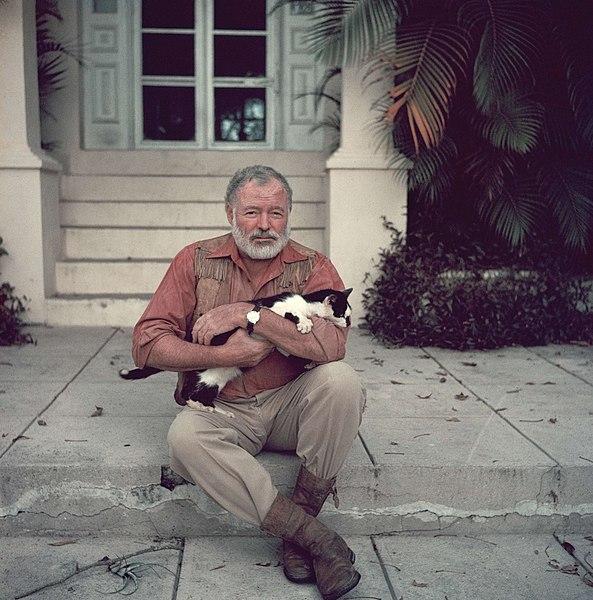Ernest Hemingway

Hemingway used words sparingly; he does not embellish the narrative with a lot of description. Ernest Hemingway used a writing technique he described as the iceberg principle, or the iceberg theory. He believed that not everything had to be explained by the author, the reader would be able to infer a lot of information from what the author chose to put into a story. He would reveal only 'the tip of the iceberg' leaving it up to the reader to decide for themselves how much was hidden beneath the surface.
Hemingway is considered a masculine writer, and his works usually focus on the male experience of life. His protagonists are men who are individualists and adventurers, and many critics have suggested that there is a strong autobiographical element in Hemingway's writing.
Code switching often occurs in Hemingway's work; he borrows words or sentence structures from other languages, for example Spanish, Italian, or German.
Hemingway was regarded as a 'man's man' by his contemporaries. He was decorated for his bravery during World War I, he drank to excess, he surrounded himself with beautiful women and interesting people, he traveled to exotic locations, he drove fast cars, had his own yacht, flew on private planes, and he hunted big game. All of this added up to a glamorous lifestyle, greatly admired by many.
Hemingway grew up in Chicago. Once he graduated high school, he was eager for his life to begin. He got a job working as a journalist in Kansas City. Hemingway wanted to join the army, but he had poor eyesight in one eye and was not accepted. Instead, he participated in World War I as an ambulance driver for the American Red Cross.

He was injured while working for the Red Cross in Italy. While hospitalised he met a nurse, Agnes von Kurowsky, whom he proposed to. She declined. These experiences inspired several of Hemingway's works.
Hemingway returned home to the USA, and in 1921 he married for the first time, to Hadley Richardson. (Hemingway was wed four times in his life.) The couple relocated to Paris, where Hemingway published his first works. In Paris, Hemingway associated with other expatriate modernist writers and artists.
When the Spanish Civil War broke out, Hemingway went to Spain as a war correspondent. His experiences in Spain inspired the novel For Whom the Bell Tolls.
Hemingway continued to seek out excitement and danger. He liked to travel to exotic locations. He went skiing in the Alps, and hunted big game in Africa. Many of Hemingway's stories are set in exotic locations.

Hemingway shattered his knee in a car accident in 1945, and he survived two plane crashes while in Africa in 1954. Injuries sustained during accidents caused him significant pain. He had always been a heavy drinker, but he began to drink even more to dull the pain. His drinking eventually lead to serious illness, and he was advised by his doctor to stop. He initially complied, but was unable to quit long term.
In 1954 Ernest Hemingway won the Nobel Prize in Literature "for his mastery of the art of narrative, most recently demonstrated in The Old Man and the Sea, and for the influence that he has exerted on contemporary style." Hemingway stated that while there were other authors who deserved it more, he was happy to accept the prize money.
While in Paris in 1956, Hemingway was reminded of some trunks he had stored in the Ritz Hotel in 1928. These trunks contained notebooks. Hemingway was excited to rediscover his writing. He began reworking the material for publication. This resulted in the publication of several works: A Moveable Feast, The Garden of Eden, and True at First Light were the result.

Hemingway had overcome depression in the past, but around 1959 he developed severe depression. Hemingway also experienced failing eyesight, confusion, anxiety and paranoia. It has been suggested that the injuries he sustained in the car and plane crashes exacerbated his illness.
In 1961 Ernest Hemingway shot himself in his home in Idaho.
Guoskevaš sisdoallu
Hills Like White Elephants is a short story by Ernest Hemingway.
A Clean, Well-lighted Place is a short story by Ernest Hemingway.